Despite Honda’s best attempts to pitch the revised Jazz as a more sporting option in the supermini market, the reality is that rival offerings continue to outshine the Japanese contender dynamically.
It rides well with its MacPherson front struts and rear torsion beam suspension ironing out pockmarked road surfaces, but there’s noticeable roll through the bends and the electromechanically-assisted steering is largely devoid of feeling. A Ford Fiesta, Seat Ibiza, or even a Volkswagen Polo would all be more fun on a windy stretch of road.
The 1.5-litre i-VTEC engine is also a bit of a sticking point. It’s not that it feels underpowered – there is 128bhp and 114lb ft of torque on tap, afterall – but by God, does it make itself heard when you press on. That lump of torque is also found at 4600rpm, meaning you really need to work the six-speed manual gearbox to keep it on the boil. Be warned, your ears won’t thank you for doing so, either.
That’s not to say that the Jazz is without any redeeming features, though. While the Japanese supermini may not be renowned for its dynamic abilities, it has always impressed with its superior levels of interior space and practicality – and this is a theme that’s continued in this latest model.
Given the Honda Jazz’s relatively small size - it’s a shade under four metres long – the cabin feels enormous, particularly in the back. Rear passengers will find a huge amount of legroom, even when sat behind a taller driver, and the Honda’s boxy shape means there’s a commendable amount of headroom, too. Boot space, meanwhile, comes in at 354 litres (that’s more than a Polo or an Ibiza) with the seats up, and can be extended to 897 litres with them folded down.
What the cabin won’t do is blow you away with its material richness – it’s all scratchy plastics here – but at least it feels like it’ll stand up to any abuse that young children might (read: will) level at it. Our test model came with contrasting red stitching on the seats, too, which helped add a touch of flair to an otherwise largely drab space. Chunky controls for the heating and ventilation are within easy reach of the driver, as is Honda’s ageing Connect infotainment system, which isn’t particularly responsive, and is further let down by dated graphics. MirrorLink is available, though, which allows you to, well, mirror the screen of a compatible device - such as a smartphone - on the 7.0in display.


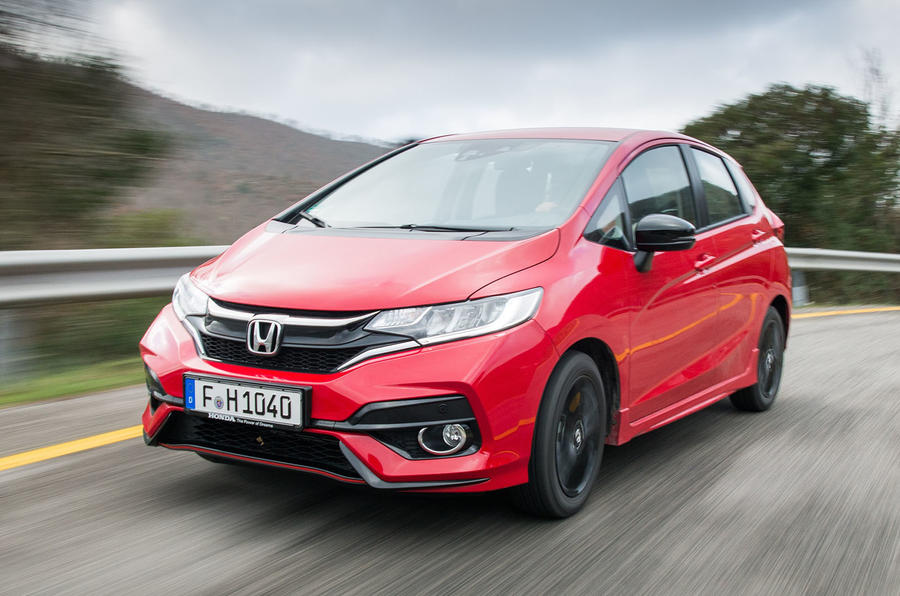

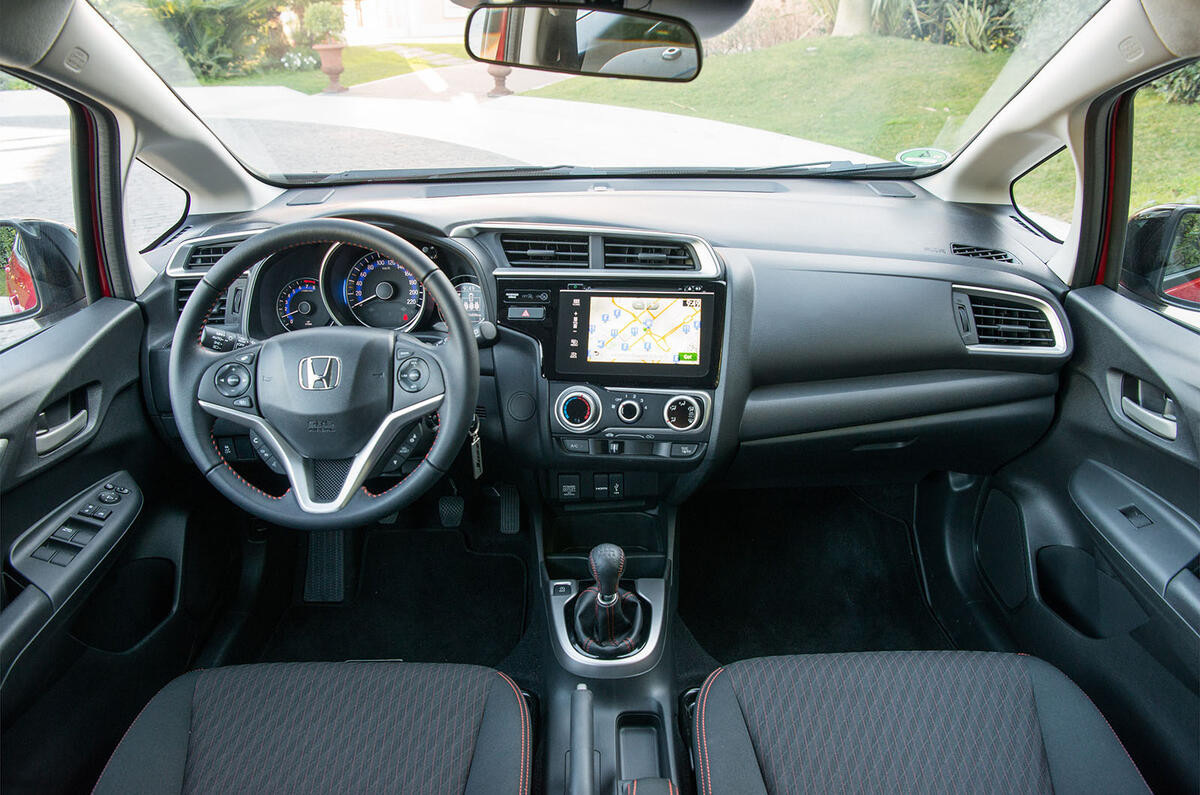

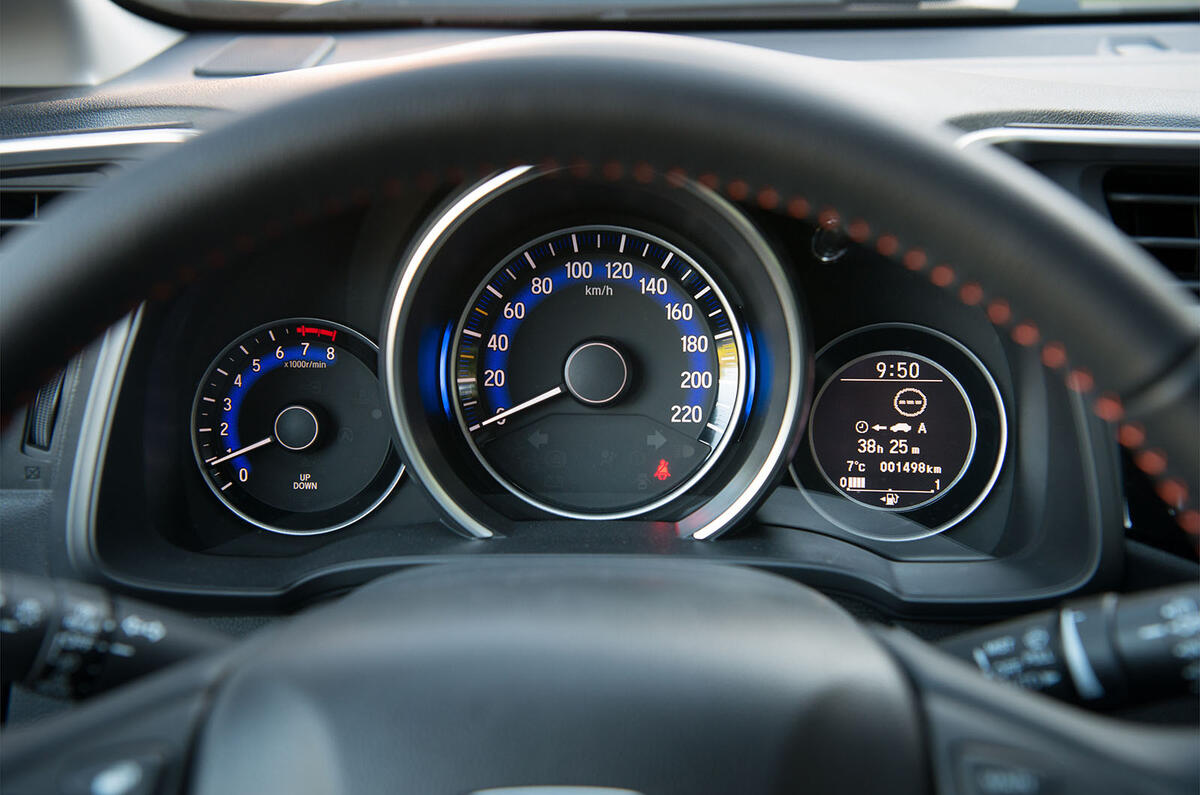
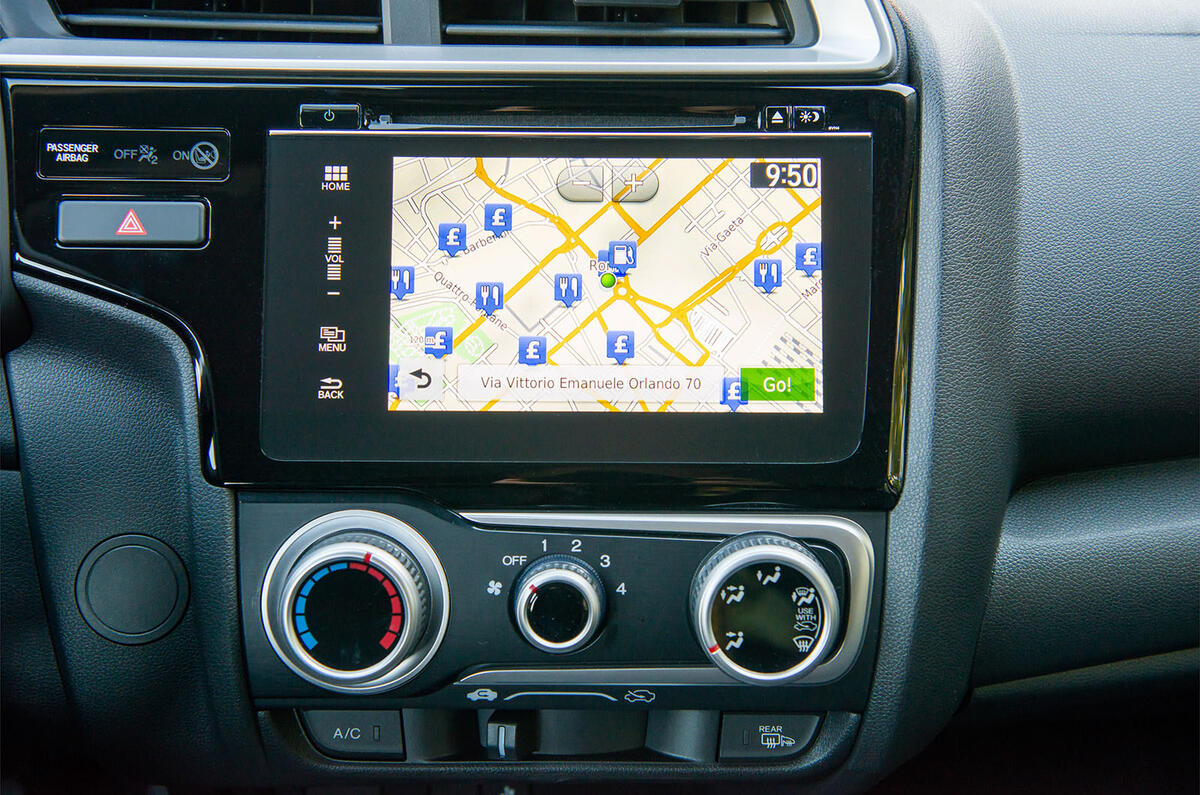








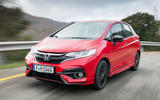

















Join the debate
Add your comment
Agreed with the european decline...
...of the Jazz, but its main market remains the USA (under the *Fit* badge.)
This pseudo-sportivisation of a (very) practical mini-van seems to me also a futile attempt to revive the euro-sales, whose target were lately focused mainly on the feminine clients.
USA main market.
Sales of 47,000 a year isn't much more than Europe
Didn't this Jazz used to have
Didn't this Jazz used to have a glossy glass screen for the climate controls? Well done to Honda if they've reverted to easy to operate dials, more manufacturers should do the same.
Fuel consumption
Presumably the fuel and CO2 figures are measured using the new WLTP test which is strange because those for the Civic diesel are clearly from the old test? Really there is no point in quoting such figures without reference to the test procedure used. But at first sight this car is neither fast nor frugal.
ures